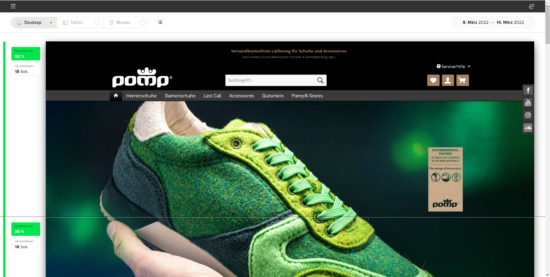How far do your visitors scroll?

by Katrin Nebermann
How far do your visitors scroll?
With etracker analytics, this question is easy to answer. Scroll tracking is automatically activated in all etracker editions and can be analyzed as a scroll map in the context of your web pages.

As a rule, the proportion of visitors who have seen a section of the website decreases with the page depth. However, it is not unusual if not 100% of visitors are assigned to the top section or if the proportion is even comparatively higher in the section below. One reason for this is that some visitors scroll down very quickly, i.e. before the tracking code is fully loaded. On the other hand, visitors can also use jump labels to go directly to the lower sections of the page. Both can be a good sign, because it means that the first impression directly invites further interaction.
The scrolling behavior does not generally say anything about how successful a page is, but depends very much on the type of page or the goal of the page. For example, if all relevant information and the order button are directly visible on product detail pages, a low scroll rate is nothing negative. If many visitors scroll down to the bottom, this can even be an indication that they are not finding the information they are looking for. In the case of blog posts, on the other hand, a low scroll rate indicates that the content has not been prepared in an interesting enough way or is too long.
Various design measures can help to promote scrolling:
- Provide a table of contents for long articles with jump labels to the individual sections.
- Arrows indicating further content.
- No bars or white areas at the bottom of the visible area that suggest the end of the page.
If only a small proportion of visitors even look at the content below a certain brand, you should not put too much effort into updating the content there and even remove it from the page if necessary. If, on the other hand, important content and calls to action such as trust-building seals or newsletter registration options are unintentionally hidden there, it is better to move these elements further up to the more visible areas.
One thing is certain, however: it is worth analyzing scroll data regularly in order to draw the right conclusions for page and content design and thus increase engagement and conversions.


